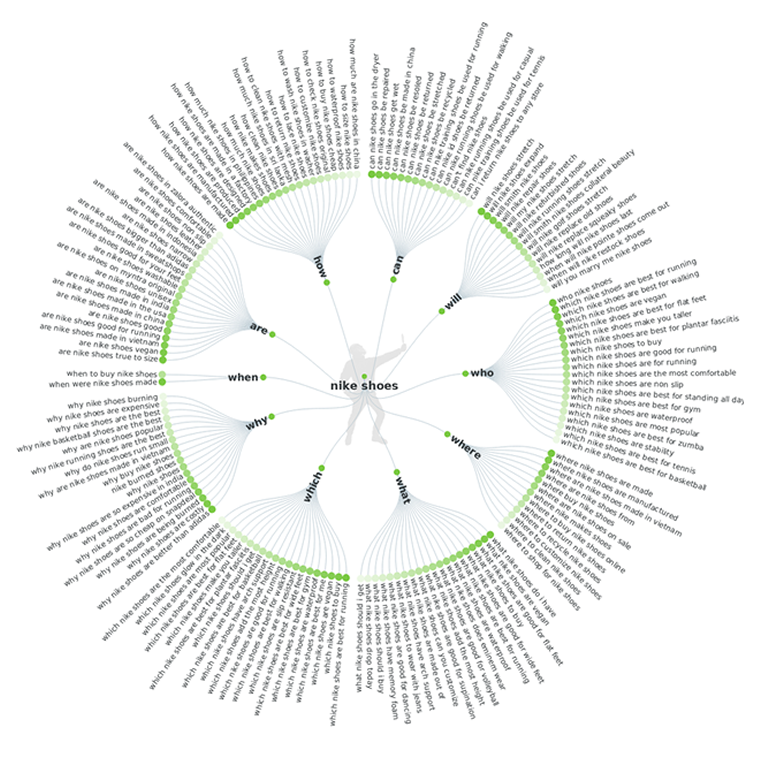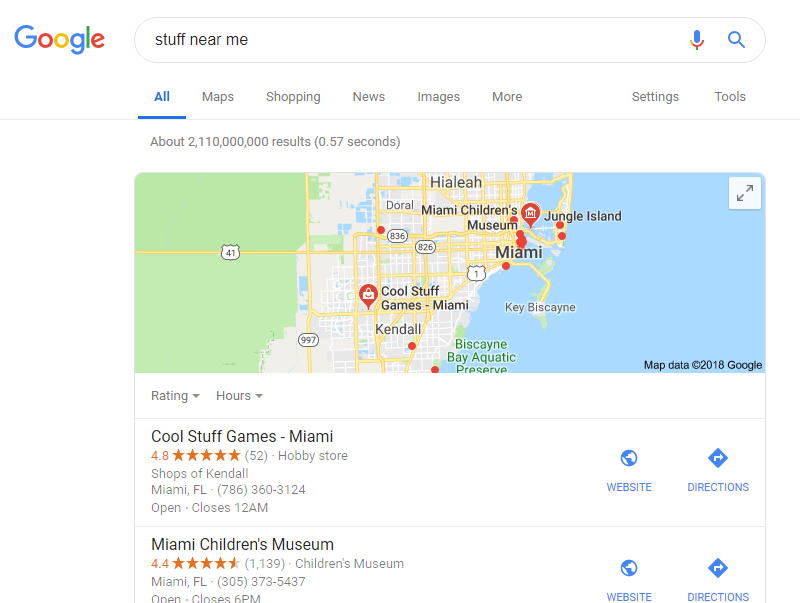You’re a small business owner.
You started a company to do what you love and now you find yourself wading through tasks that have nothing to do with it.
You’re keeping track of receipts, paying bills, you’re the lead customer service rep, and you’re the janitor.
Oh, and somewhere in there you’ve got to find time to be the chief marketing officer and hope you have time left to do what you started a company to do.
I speak from experience on all these fronts and, as a veteran SEO of some 17 or 18 years, I can say that keeping up with search is its own job.
But you know you need to understand how to either do it at a basic level or at least know what the heck your SEO is talking about or perhaps even, what they should be talking about.
And that is the purpose of this article.
We’ll be looking at some of the top principles of SEO that every small business owner should be aware of.
You don’t need to master them, just understand:
- What they are.
- How they impact search.
- What you should be thinking about as you either attempt to learn the strategies around them or hire someone who hopefully already does.
Following that we’re going to include a brief glossary of the more common terms I find myself accidentally using that causes my clients’ eyes to gloss over or the phone to go silent.
It isn’t your fault you don’t know the terms. But they’re handy to know as I accidentally use many of them out of habit and I’m sure you’ll come across them, too.
But we’ll start with the principles…
SEO Principle 1: Content User Intent

You’ve heard it a thousand times I’m sure. Content is king.
Content is what the search engines use to fulfill user intent.
User intent is king, and content is the means to that end.
I am not suggesting that you don’t need to produce content, quite the contrary, but as you ponder the type of content you’ll be producing what you really need to be asking yourself is:
“What content will increase the odds that you will fulfill the search engine users’ intents?”
Now, that might sound simple enough, they just searched for ‘nike shoes’ so clearly they want to buy them, right?
Perhaps and some might argue … probably.
Now ask yourself, on how many sites can folks buy Nike shoes?
Thousands. And every one of them meets this single intent in varying degrees.
You can increase your odds on meeting this single intent better than others by having a larger variety of shoes and including more information on each pair.
And now you’re only up against hundreds of sites that have done that. Hundreds that meet this same user intent.
But wait, we’re not really talking about the user’s intent, are we?
No, we’re talking about your intent.
You want to sell Nike shoes.
The user just entered ‘nike shoes’ into the search engine. We don’t know what their intent is.
As mentioned above, it may well be to purchase shoes and there are plenty of sites Google can choose from that fulfill that intent.
Here’s what Answer The Public shows for ‘nike shoes’:

Seems people might be interested in a little more than just buying the shoes, doesn’t it?
Google isn’t looking to fulfill your intent, they’re looking to fulfill the searcher’s intent.
A site that fulfills more intents and fulfills them well stands a higher chance of ranking as Google can have a higher confidence that their users’ intents are more likely to be met.
So yes… you need content. But only because you need to fulfill the user’s intents.
SEO Principle 2: Links

Ah, links, one of the top ranking signals we hear so much about.
As a business owner, knowing the ins-and-outs of links and link building can be a challenge at best.
Heck, link building is challenging even for seasoned SEO pros.
There are, however, a few things you need to know that will keep you on the right path.
Why Links Matter
Some will argue with the semantics, but at its core, you can think of a link as a vote and some votes are more equal than others.
When a site links to you that link passes what’s called PageRank.
More about that in the glossary below.
At its root, though, it’s counting as a vote for the content on the page being linked to.
The stronger the linking page, and the more visible the link, the more it counts.
Basically, the more likely a link is to be clicked across the internet, the more weight it carries.
What to Look for in a Link
So, what should you look for when either building links or proofing the links being built for you?
I’m not going to get into some massive outline of link valuation, it’s different in each scenario but there are a handful of rules that should always be followed.
Is there a reason outside of link building for the link to exist?
If the answer is “no” then it probably won’t pass weight.
This isn’t to say that it has to necessarily have been worth pursuing if it had no link value, there are strategies that are employed that produce traffic and value but not enough to warrant the cost without link weight being considered.
But if there is no reason for the link to be on a site, don’t bother putting it there.
Would you click the link and if so, would you be satisfied with where it went to?
I’ve seen links jammed into the oddest locations in content or on peculiar sections of a website.
If the link doesn’t serve a purpose to the visitor on a page, then it will likely carry very little in the way of weight.
Do your competitors have the link?
Having a competitor getting a link from a specific site is not necessarily a sign that it’s good. But a site that links to 3 or 4 of your competitors that are ranking well probably is.
Probably.
Use your judgment but it’s generally a strong indicator or weight and of one that may be easy to secure.
Anchor text/readability matters
Anchor text is the text used to link to your site.
What you want to be sure of is that the anchor text used matches what the user would be expecting when they click the link.
It also needs to make sense on the linking page. Don’t force anchor text or your target page.
If you’re working on link building, link to what makes sense using the words that make sense.
Notice how I linked to Answer The Public above using their name? It’s what made sense.
When I link to internal articles I tend to use the article title or subject (e.g., the link to the ‘top ranking signals’ piece, also above).
Think about what a link would look like if links didn’t count and either do that or find a new link location when the phrasing and anchors you want will flow naturally to the reader and by extension, the engines.
SEO Principle 3: Technical

Technical SEO tends to refer to the code-side or server-side of your web presence.
The impact of technical SEO will generally be felt strongest in the following areas:
- Speed.
- Structured data / Schema (more on this in the glossary below).
- Internal linking structures.
- Scripts and tracking.
- Content issues such as duplication and incorrect canonical tags.
- Key Google-chasing URL functions such as switching to HTTPS.
Technical SEO is a vast area with various requirements and aspects, dependent on the site type, CMS (if applicable), and server/hosting environment.
The best globally applicable checklist I’ve come across is Alan Bleiweiss’ free SEO Audit Checklist – go download it. It covers more than just the technical side of things but in my mind, that’s where it really excels.
If you aren’t a technical person this is not your area and I can’t recommend enough to keep out.
Technical SEO is for technical SEO professionals.
You can easily do more harm than good if you don’t know what you’re doing.
SEO Principle 4: Local SEO

If you’re focused on the local market, you’ll have heard of specific local SEO strategies. It’s a different type of SEO.
There are a lot of overlaps as one might imagine, but there are SEO elements specific to local.
As this article isn’t about outlining the specific strategies but rather the areas and principles you should be considering, what I want to make you aware of is that you or your SEO will be looking far more to local relevancy than overall site strength.
You can read this as: you’ll pay more attention to the local nature of links than volume and you’ll need to make sure your onsite presence reinforces your location. This is how a small mom-and-pop pizza shop can rank against major national chains.
This isn’t to say you simply need to jam your city into the content as much as you can (though having it in the title, heading tags and placed logically with content where appropriate is wise).
What you need to look at are:
- The Organizational schema that applies to you and getting it onto the page(s).
- Including an embedded Google Map of your Google My Business listing (verified) onto your contact page.
- Verifying your business and location with Bing.
- Being aware of citations and NAP (more on that in the glossary).
You’ll also want to pay more attention to smaller local papers and sites than larger, national ones in your link efforts.
This isn’t to say you should ignore large opportunities – they’re great – but the time involved is generally substantially more with greatly diminished returns for local.
Because of the specifics of this area, for those impacted, I would recommend starting with Search Engine Journal’s Guide to Local SEO Ebook that was published just a couple of months ago.
SEO Principle 5: Machine Learning

By now most of you will have heard of machine learning and more specifically, RankBrain.
RankBrain was Google’s first introduction of machine learning into their algorithms.
Understanding the influence of machine learning on the search algorithms does not have to be complicated.
Machine learning itself is, but what you need to know is not.
Machine learning simply gives the search engines the ability to better understand content as a human would and context.
Before we get into that, here’s what Frédéric Dubut, a Senior Project Manager for Bing had to say:
“A major goal of our Bing ranking team is to build an algorithm that would rank documents in the same order as humans would as they are following the guidelines. You can only do so at the scale of the web by generalizing your ranking algorithm as much as possible.
It turns out that modern machine learning is very good at generalizing, so you can expect our core ranking algorithm to get closer to that ideal Intelligent Search product view that we hold internally and which we try to capture in our own guidelines.”
And even though we’re at the earliest stages of machine learning, it works well.
What you need to know is summarized in that statement. Machine learning and AI will carry the engines forward in understanding what should rank, not just what does rank.
Think about what would be required to tailor each search result to each searcher and build an algorithm for each type of search scenario. This is not possible with manually programmed algorithms.
Machine learning, as it matures, is handing to the engine’s the power to:
- Process massive amounts of data.
- Understand the meaning of that data and how the different points connect.
- Use that information to tailor results to the best probability of meeting an individual searcher’s intent.
Basically, everything we’ve talked about above – machine learning puts in the hands of the engines the ability to read those signals as a human would.
Hopefully with that my constant tone of “it should look natural and ideally be natural” is making more sense. While some tricks might work today, their days are numbered.
And That’s It!
Hopefully you now have a stronger grasp of the SEO approaches that you, or those you hire, should be taking.
I’ve always believed that an understanding of “why” is always better than an understanding of “how” as it stands the test of time and allows you to better navigate the various “hows” that you will encounter in your further readings.
And speaking of additional readings, I promised a glossary.
Below you will find a glossary of some of the more common SEO terms I throw around on call and in articles, often without considering that the person hearing or reading them may not fully understand what I’m talking about rendering my point)s) moot.
Danny Goodwin produced a more compete and excellent glossary of SEO terms.
Here’s my shortlist…
SEO Glossary

- Algorithm: A computer program, generally mathematical, used to rank websites. The search engines use a multitude of different algorithms to generate the results you see. In fact, there are many just to calculate the weight a link should pass to a target site.
- Canonical or Canonical URL: This is an element that can be added to the head of a website (invisible to humans without viewing the source) and defines the URL that should be credited with the content found. For example, if one was to copy an article from another website for their users, one could use the canonical tag back to the source site, thus passing all weight to it and also avoiding duplicate content issues.
- Citation: In local SEO, a citation generally refers to a reference of a site or web entity by specific other sites know to hold value as citation sources. Citation sources generally refer to those sites that reinforce NAP which we will be getting to shortly and includes sites like Yelp, Google My Business, Foursquare, etc.
- Crawler or Bot: The search engines send out various bots or crawlers to discover new content. Think of them as spiders crawling “the web”.
- Entities: While entities are complex, in its simplest form an entity is, “a thing or concept that is singular, unique, well-defined and distinguishable.” It can be a person, place, thing, idea and much more. The color red is an entity for example, and so is this sentence. It is anything that could be defined as a thing unto itself, without being confused with another thing based on what it is, and its location in space and time.
- NAP: Short for Name, Address, Phone Number. In local SEO the consistency of a business’s NAP is considered an important signal and citation sources are generally used to reinforce it. I would suggest that consistent NAP is important for all businesses to reinforce their entity, not just in local.
- PageRank: PageRank is a Google-specific algorithm which they define as, “… the measure of the importance of a page based on the incoming links from other pages.” In simple terms, each link to a page on your site from another site adds to your site’s PageRank. Basically, Google calculates the value of a page or site in part based on the number and quality of links coming into it. The value they assign to the links or target page are known as PageRank.
- Pogo-sticking: Pogo-sticking occurs when a searcher clicks through to a site and then the back button without digging further in. Technically this term refers to a searcher who does this multiple times on a single results page, but it’s commonly used in reference to an onsite quality metric for a single site that the engines may-or-may-not use.
- SEO, SEM & PPC: I’m including these all in one entry as it’s important to understand the difference as a collection. SEO refers to ranking in the organic search results, PPC refers to ranking in the paid results and SEM refers to both, but is commonly misused to refer only to PPC.
- SERP: The Search Engine Results Page. Basically, what you see after running a query.
- UX: UX stands for User Experience. The feel and usability of a website experienced by the user.
There are a lot more terms and if you’re unfamiliar with SEO as a whole I recommend reading the glossary linked to above but these are the ones I use the most often with clients that I’ve found cause the most confusion.
More Resources:
Image Credits
Featured Image: Adobe Stock and Adobe Stock, edited by author
In-Post Image #1: Adobe Stock
In-Post Images #2 & 5: Screenshots taken by author, December 2018
In-Post Image #3: Adobe Stock
In-Post Image #4: Adobe Stock
In-Post Image #6: Adobe Stock, edited by author
Subscribe to SEJ
Get our daily newsletter from SEJ’s Founder Loren Baker about the latest news in the industry!
